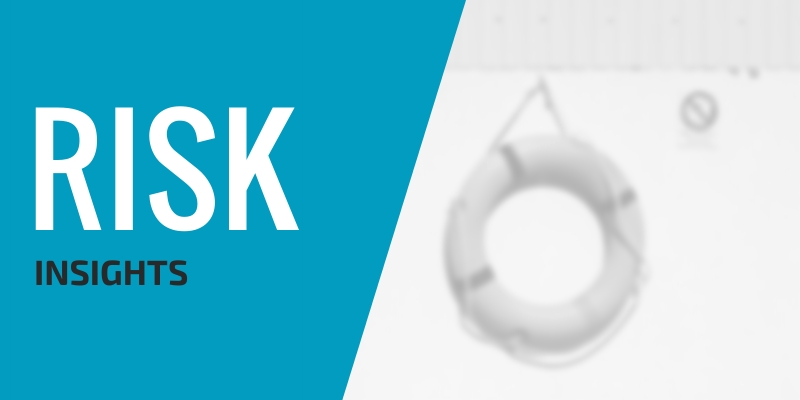 Although small in size, fusible links play a significant role in ensuring the success of various fire suppression fixtures within commercial properties.
Although small in size, fusible links play a significant role in ensuring the success of various fire suppression fixtures within commercial properties.
Generally speaking, fusible links—which can be connected to fire doors, windows, vents and more—consist of two metal pieces bonded together with a fusible alloy.
In the event of a fire, this alloy will melt and the two metal pieces will separate following exposure to high temperatures, thus automatically closing or activating the fixture the link was connected to and promoting adequate fire suppression capabilities. For instance, if a fusible link was connected to a fire door, the separation of the link would ensure the door closes during a fire, blocking flames and smoke from trveling to different areas or fire divisions throughout the affected property.
Review the following guidance to learn more about fusible links, how they are utilized and best practices for effectively maintaining such devices at your property.
Fusible Links Explained
Put simply, fusible links are heat-activated devices that can be used to ensure the functionality of numerous fire suppression fixtures at a commercial property. Fusible links are typically installed via cables or chains as a supplement to fire barriers within a building—which are fixtures used to prevent flames and smoke from reaching additional sections of a property during a fire.
Fire barriers are especially useful in the wall openings of large buildings, as they can keep fires from causing widespread property damage. Such barriers also help develop fire divisions within a property, which can lead to reduced commercial insurance rates. Examples of fire barriers that fusible links can be connected to include:
- Fire doors (including sliding, swinging, hinged and rolling doors)
- Heat and smoke vents
- Fire windows
- Fire dampers and ducts
Fusible links can also be used to ensure the activation of specialized fire suppression systems—such as the hoods in commercial kitchens and industrial dry chemical fire suppression systems in paint booths.
Regardless of what they are connected to, fusible links must be installed on both sides of the fixture in which they are supplementing to ensure operational success. This way, the links will be able to close or activate the fixture as quickly as possible—no matter what direction the fire is coming from.
Although most fusible links generally consist of two metal pieces bonded together, these devices can still come in several shapes, sizes and designs. The type of fusible link necessary will depend on the characteristics of the fixture that the link is being connected to (e.g., weight, dimensions and location in the building), as well as the unique fire exposures of the commercial property (e.g., industry-specific risks and daily operations). In any case, fusible links typically melt and break apart once exposed to high temperatures of at least 165 degrees Fahrenheit. If installed and maintained correctly, these devices can be extremely reliable—allowing a property’s fire barriers or suppression systems to
function correctly and minimize potential losses.
Maintaining Fusible Links
First and foremost, it’s important to note that fusible links can only be effective if the fire suppression fixtures they are supplementing are in good condition and cleared of potential obstructions. For example, if a fusible link was connected to a fire window, the window would need to be properly maintained and not be blocked from fully closing by other items (e.g., a window wedge) for the link to operate successfully.
In addition, National Fire Protection Association (NFPA) standards—namely, NFPA 80—outline the following installation, inspection, maintenance and replacement requirements for fusible links:
- Choose the right links. Select fusible links that are approved for use by Underwriter Laboratories and fully compatible with the fire suppression fixture in which they are being connected to. Using unapproved or incompatible fusible links can hinder the overall effectiveness of the associated fixture.
- Hire an expert. Only allow a qualified contractor to install fusible links on your property’s fire suppression fixtures. Such a contractor will be able to connect the links to their associated fixtures adequately—selecting the correct location of each link and utilizing the right cables or chains for placement.
- Keep them clean. Be sure to clean your property’s fusible links regularly to prevent the risk of any buildup (e.g., dust, dirt or grease) affecting the links’ functionality. Follow the manufacturer’s instructions for appropriate cleaning methods. Never paint fusible links, as this will render them unusable.
- Pay attention. Inspect your property’s fusible links often—as frequently as you inspect their associated fire suppression fixtures. Look for signs of corrosion and deterioration, as well as damages to the links’ cables or chains (e.g., kinks or twists).
- Consult a professional. Make sure a certified professional inspects your property’s fusible links whenever they inspect and test the links’ associated fire suppression fixtures (typically either annually or semiannually).
- Make replacements as needed. Have your property’s fusible links replaced immediately if they show any signs of damage or get painted on. It’s also crucial to replace fusible links on a routine basis. If the links are supplementing a specialized fire suppression system, they should be replaced semiannually. If the links are connected to a fire barrier, they should be replaced annually.
For more risk management guidance, contact us today.
This Risk Insights is not intended to be exhaustive nor should any discussion or opinions be construed as legal advice. Readers should contact legal counsel or an insurance professional for appropriate advice. © 2021 Zywave, Inc. All rights reserved.

